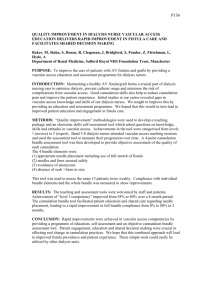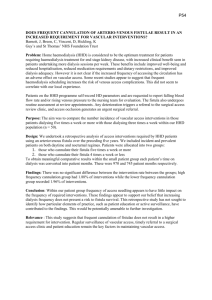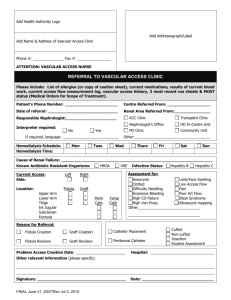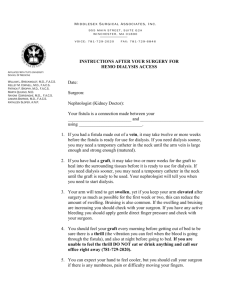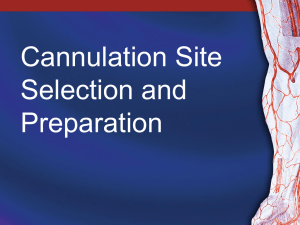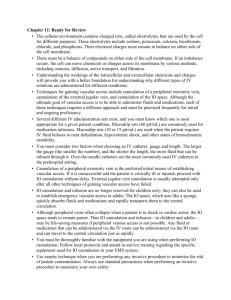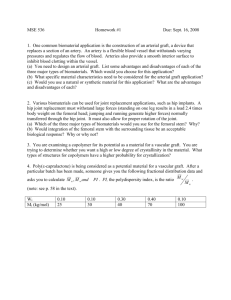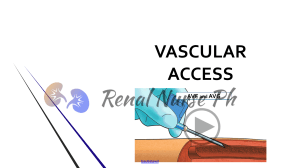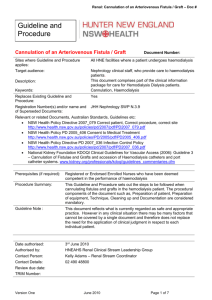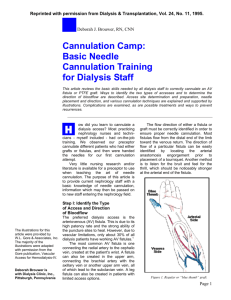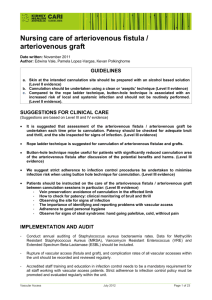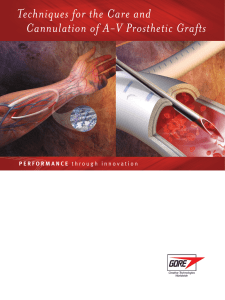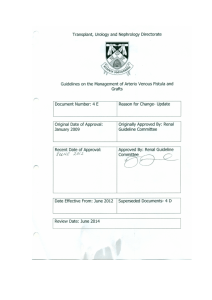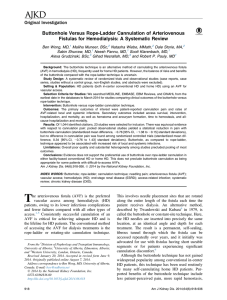A-V FISTULA AND GRAFT PROTOCOL
advertisement
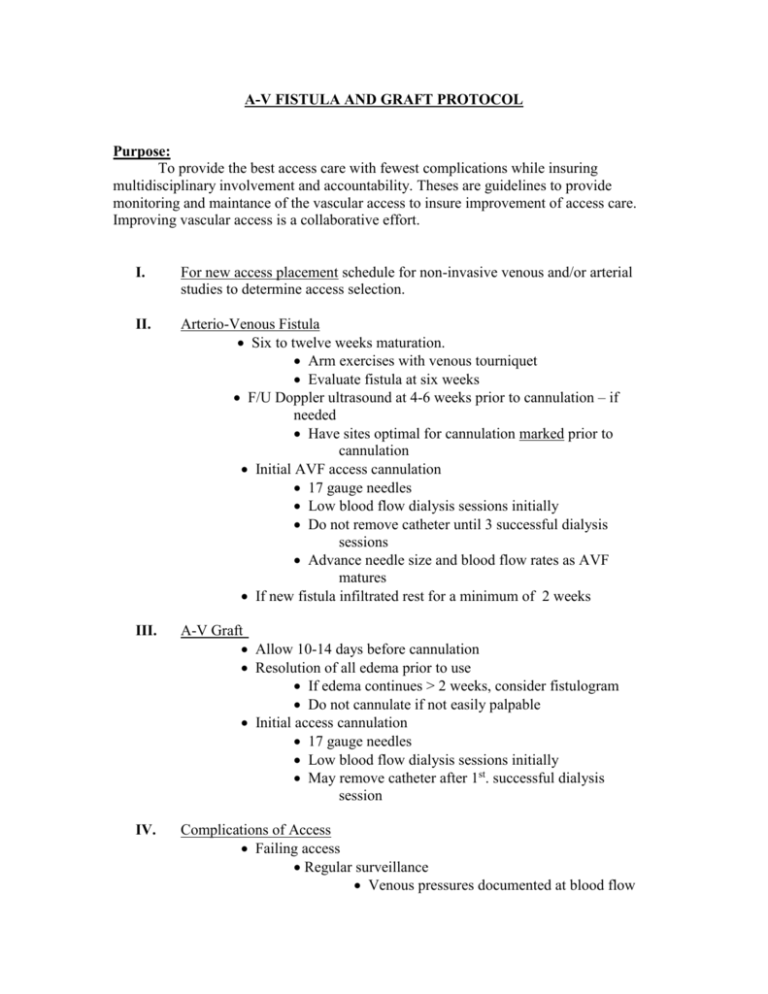
A-V FISTULA AND GRAFT PROTOCOL Purpose: To provide the best access care with fewest complications while insuring multidisciplinary involvement and accountability. Theses are guidelines to provide monitoring and maintance of the vascular access to insure improvement of access care. Improving vascular access is a collaborative effort. I. For new access placement schedule for non-invasive venous and/or arterial studies to determine access selection. II. Arterio-Venous Fistula Six to twelve weeks maturation. Arm exercises with venous tourniquet Evaluate fistula at six weeks F/U Doppler ultrasound at 4-6 weeks prior to cannulation – if needed Have sites optimal for cannulation marked prior to cannulation Initial AVF access cannulation 17 gauge needles Low blood flow dialysis sessions initially Do not remove catheter until 3 successful dialysis sessions Advance needle size and blood flow rates as AVF matures If new fistula infiltrated rest for a minimum of 2 weeks III. A-V Graft Allow 10-14 days before cannulation Resolution of all edema prior to use If edema continues > 2 weeks, consider fistulogram Do not cannulate if not easily palpable Initial access cannulation 17 gauge needles Low blood flow dialysis sessions initially May remove catheter after 1st. successful dialysis session IV. Complications of Access Failing access Regular surveillance Venous pressures documented at blood flow rates of 200 – notify MD if VP > 100 URR measurement Flow measurement Abnormal findings Fistulogram Referral to vascular surgery Thrombosis Call vascular surgery after 9am Draw K+ if necessary Notify Nephrologist Aneurysmal dilatation Causes Repeated use and trauma ( “sweet spots ‘) Proximal venous stenosis Complications Thrombosis and embolization Skin erosion (scabs), infections and or bleeding Treatment Site rotation Interposition grafting Repair New graft Vascular Steal – Definition: Ischemia in the distal extremity after graft placement. Due to diversion of nutritive flow through the fistula. Sign and symptoms Coolness Pallor Ischemic contractures – if steal remains untreated. Gangrene – if steal remains untreated Treatment of steal Minimal symptoms – observation Severe symptoms Banding (narrow the diameter of the inflow) Ligation Access Infection Signs and symptoms Erythema Edema Tenderness Cellulitis Purulence Fever Treatment Antimicrobial therapy Graft removal – if unresponsive to antibiotics V. VI. VII. Dialysis Unit Assessment Inspection Anatomical placement of access Condition of skin over access Visual characterization of depth of AVG or AVF Presence/absence of psuedoaneurysms/aneurysms Presence/ absence of collateral prominent veins Palpitation Temperature Pulses Edema Graft palpable +/ Thrill +/ Auscultation Character/ quality of bruit Documentation of any of the above in nurses notes and flow sheet. When to call the Vascular Surgeon Thrombosed graft/fistula Persistent difficulty in cannulation Repeated infiltrations Significant limb edema Presence of new large collateral veins Erythema overlying the graft Erosion of skin overlying the access Anneurysmal changes in the access Persistent hand pain/weakness/numbness Any unexplained access problems Cannulation Team Charge nurse to evaluate all new access to determine maturation All new access to be cannulated by most experience staff member until access fully mature In most cases 1st cannulation to be done by charge nurse. Follow new graft protocol as previously mentioned. Use attached sheet as documentation. Grafts with any problems old or new must be re-evaluated by charge nurse and assigned to experienced staff for cannulation. VI. Vascular Rounds To be held quarterly Multidisciplinary team Vascular Surgeon DON Charge Nurse Staff Nurse Nephrology Nurse Clinician Social Worker
